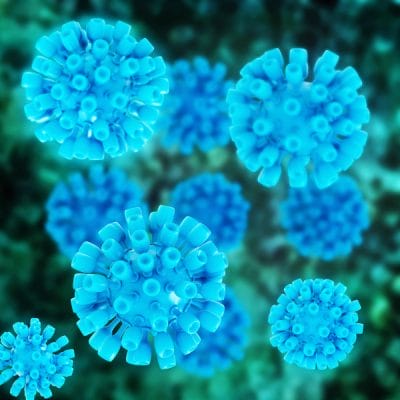- What is hepatitis A
- Hepatitis A Symptoms
- Conventional Treatment for hepatitis A
- When is the hepatitis A Vaccine Given
- Efficacy of the hepatitis A Vaccine
- How Long Does hepatitis A Vaccine Protection Last
- Ingredients in the hepatitis A Vaccine
- Hepatitis A FDA Package Inserts
- Controversy and the hepatitis A Vaccine
- Hepatitis A Vaccine Reactions
- The Bottom Line and the hepatitis A Vaccine
- Who Should Not Get the hepatitis A Vaccine
- References
- Resources
What is hepatitis A (HAV)?
- Hepatitis A is a RNA virus that generally only humans can contract (monkeys were able to contract hep A in a lab setting).
- Hep A is acquired by mouth through fecal-oral transmission (generally unsanitary food or water) and then the virus goes to your liver to replicate.
- The virus is present in the blood and feces around 12 days after initial infection for up to 3 weeks (you MUST somehow eat the feces of the infected person to become infected yourself). [1]
- Contamination can happen in daycares, restaurants, oceans (due to poor sewage control), and when sanitary practices are poor.
Example: Johnny eats something that has feces on it that has been contaminated with hep A. 12 days later Johnny is pooping out his feces contaminated with hep A. Approximately 2 weeks later Johnny may or may not have symptoms of hep A. If Johnny is under 6 yrs old, he has a 70% chance of having NO symptoms at all says the CDC. [1] If he does have symptoms, they are generally mild in nature consisting of fatigue, fever, and possibly jaundice (yellowing of the skin). He continues pooping out contaminated hep A feces for a few weeks. So during this time, if Johnny’s poop gets on Lisa’s food (or somehow in her mouth via same play toys, etc) and she eats it, she may get hep A also.
Back to Top
Hepatitis A Symptoms
“The likelihood of symptomatic illness from HAV infection is directly related to age.
- In children younger than 6 years of age, most (70%) infections are asymptomatic.
- In older children and adults, infection is usually symptomatic, with jaundice occurring in more than 70% of patients.
- HAV infection occasionally produces fulminant hepatitis A (liver failure).” [1]
Mild
- fatigue/malaise
- low grade fever, 102F (2-3 days)
Moderate
- fatigue/malaise
- low grade fever, 102F (2-3 days)
- diarrhea
- nausea
- jaundice (yellowing of skin)
Severe
- Adults may suffer more severely regarding the symptoms above.
- Enlarged liver/liver damage/acute failure
Complications
- Hospitalizations: 11-22% of those infected
- Death: 2-5 per 1,000 infected in 1996 before introduction of vaccine, 0 deaths reported in past 10 years
Groups at Increased Risk for Hepatitis A Complications:
- Adults
- International travelers
- Men who have sex with men
- Users of illegal drugs
Conventional Treatment for hepatitis A
- There is no specific medical treatment and the virus must run its course.
- Those who contact the Hep A virus have lifelong immunity.
When is the hepatitis A Vaccine Given?
2 doses: 12 months, 18 months
- For more information: CDC/Alternative Vaccine Schedules
Efficacy of the hepatitis A Vaccine
One dose
- 1 dose of HAV vaccine is—
- >95% effective in adults
- >97% effective in children
Two doses
- 2 doses of HAV vaccine are—
- 100% effective in adults
- 100% effective in children
How Long Does hepatitis A Vaccine Protection Last?
- It is not known how long a vaccinated person is protected against hepatitis A.
- The HAV vaccine has only been available since 1995-1996, so duration of protection has yet to be established.
Ingredients in the hepatitis A Vaccine
The Vaqta brand (Merck) contains:
- The hep A virus (whole, dead virus)
- Aluminum— 225 micrograms per dose
- Saline solution
- Residual proteins and DNA from the human embryo cell line
- Traces of cow blood proteins (albumin), to nourish the human cell line
- Formaldehyde
- Sodium borate (to decrease acidity)
- “Other residual chemicals at a level of 10 parts per billion” (the actual chemicals aren’t listed in the PI)
The Havrix brand (GlaxoSmithKline) contains:
- The hep A virus (whole, dead virus)
- Aluminum— 250 micrograms per dose
- Saline solution
- 2-phenoxyethanol (0.5 percent of the vaccine solution)
- Amino acids (0.3 percent of the vaccine solution), which are used to nourish the human cells
- Polysorbate 20 (25 micrograms)
- Formalin (50 micrograms)
- Residual proteins from the human cells. Residual DNA isn’t listed, but it is probably there as it is in Vaqta.
- Neomycin (extremely minute traces), an antibiotic used to keep the cell culture sterile
Note: Adults 19 years of age and older receive one dose of adult formulation (50 U per dose) with a booster dose 6 to 18 months after the first dose (this means double the dose of the ingredients above). [1]
If you would like specific information regarding each ingredient, including studies:
Hepatitis A FDA Package Inserts
(Please read the “Contraindications/Warnings/Precautions/Adverse Reactions” VERY carefully inside each FDA Package Insert)
- Havrix (GlaxoSmithKline) Havrix FDA Package Insert
- VAQTA (Merck) VAQTA FDA Package Insert
- Twinrix (GlaxoSmithKline) Hep B and hep A combo. Twinrix FDA Package Insert (dose at 0, 1, and 6 months)
Controversy and the hepatitis A Vaccine
- Nearly all children infected with hep A younger than age 6 have ZERO symptoms at most a low grade fever for a few days with minor diarrhea.
- Older children may exhibit symptoms, very minor in nature.
- Those affected most severely by hep A are adults, so basically we are vaccinating very young children to protect adults.
According to the CDC Pink Book under hepatitis A:
Children play an important role in HAV transmission. Children generally have asymptomatic or unrecognized illnesses, so they may serve as a source of infection, particularly for household or other close contacts.
Hepatitis A Vaccine Reactions
Signs to look for include:
- Fatigue
- Fever >99.5° (37.5°C)
- Induration, redness, and swelling of the injection site
- Malaise [9]
Known Severe Reactions:
- Safety studies reported seizures in 1% children 12-23 months of age [13]
HAVRIX Package Insert- Postmarketing Surveillance:
The following additional adverse events, regardless of causality, have been reported during post-marketing use of HAVRIX:
- Infections and Infestations: Rhinitis.
- Blood and Lymphatic System Disorders: Thrombocytopenia.
- Immune System Disorders: Anaphylactic reaction, anaphylactoid reaction, serum sickness–like syndrome.
- Nervous System Disorders: Convulsion, dizziness, encephalopathy, Guillain-Barré syndrome, hypoesthesia, multiple sclerosis, myelitis, neuropathy, paresthesia, somnolence, syncope.
- Vascular Disorders: Vasculitis.
- Respiratory, Thoracic, and Mediastinal Disorders: Dyspnea.
- Hepatobiliary Disorders: Hepatitis, jaundice.
- Skin and Subcutaneous Tissue Disorders: Angioedema, erythema multiform, hyperhidrosis.
- Congenital, Familial, and Genetic Disorders: Congenital anomaly.
- Musculoskeletal and Connective Tissue Disorders: Musculoskeletal stiffness.
- General Disorders and Administration Site Conditions: Chills, influenza-like symptoms, injection site reaction, local swelling. [9]
The Bottom Line and the hepatitis A Vaccine
- “In the Pre-vaccine era: The case–fatality rate among persons of all ages with reported cases was approximately 0.3% but could be higher among older persons (approximately 2% among persons 40 years of age and older).” [1] Simply put, before the HAV vaccine was introduced in 1996, 0.3% of those infected with hepatitis A may died from HAV. So, first you must ingest something that has feces contaminated with hep A. Then if you do contract the virus, your chance of dying was 0.3%. Generally, 100 people per year died of HAV before the introduction of the HAV vaccine- a VERY far cry from the 220,000-440,000 deaths that occurred in 2013 due to medical malpractice (I am not at all downplaying death, I am trying to put hep A into perspective).
- It is pretty darn rare in the USA to come into contact with hepatitis A and most children who contract hepatitis A are symptom free. If you are traveling to Mexico or South America, different story.
- If you choose to vaccinate against hep A, one dose of vaccine is probably all your child needs to gain immunity, >97% immunity after one dose.
- When deciding which vaccines are most important, the hep A vaccine is toward the bottom of the totem pole in importance.
- If you choose to vaccinate at all for hep A, your child does not need to be vaccinated for it until later- at least after age 2.
Who should NOT get the Hepatitis A vaccine. [10]
References
- Epidemiology and Prevention of Vaccine-Preventable Diseases, 12th Edition (The Pink Book)
(CDC) (web version)
- What Your Doctor May Not Tell You About(TM) Children’s Vaccinations
- The Vaccine Book: Making the Right Decision for Your Child (Sears Parenting Library)
- Make an Informed Vaccine Decision for the Health of Your Child: A Parent’s Guide to Childhood Shots
- Vaccinations: A Thoughtful Parent’s Guide: How to Make Safe, Sensible Decisions about the Risks, Benefits, and Alternatives
- Vaccine Epidemic: How Corporate Greed, Biased Science, and Coercive Government Threaten Our Human Rights, Our Health, and Our Children
- How to Raise a Healthy Child in Spite of Your Doctor
- Vaccine Ingredient Summary (CDC)
- HAVRIX FDA Package Insert
- www.cdc.gov
- www.fda.gov
- Federal Vaccine Compensation Statistics (US Department of Health and Human Services)
- Niu MT, Salive M, Krueger C, Ellenberg SS. Two-year review of hepatitis A vaccine safety: data from the Vaccine Adverse Event Reporting System (VAERS). Clin Infect Dis 1998;26:1475–6. (The CDC uses this study when mentioning seizures as an adverse reaction to the hep A vaccine, however I find no mention of “seizure” in this post study)
- CDC – Prevention of Hepatitis A Through Active or Passive Immunization
Resources
- CDC Hepatitis A Vaccine Info
- World Health Organization (WHO) – Hepatitis A
- Immunization Action Coalition – Hepatitis A Vaccine Information Statement
- Vaccine Book List (with approximately 100 resource books)
- www.askdrsears.com
- World Health Organization (WHO)
- Center for Disease Control (CDC)
- www.livingwhole.org
- www.drtenpenny.com
- Vaccination Information Network
- www.vactruth.com
- More Vaccine Resources from Dr. Green Mom
- Vaccine Damage Citations
- Vaccine Safety Citations
Back to Top
Reviewed/Updated: 07/19
Content Created: 07/14








